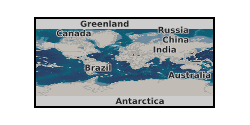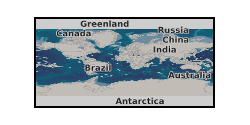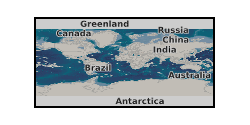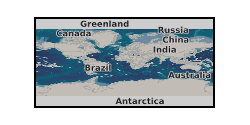Ionosphere
Type of resources
Topics
Keywords
Contact for the resource
Provided by
Years
Formats
Update frequencies
-

High frequency (100 Hz) data from two horizontal induction coils measuring the Earth's magnetic field at the Eskdalemuir Observatory in the United Kingdom. The data covers the period from January 2019 to December 2019. Also included are examples of Matlab code and the frequency calibration files to convert to the raw data to SI units. Thumbnail spectrograms and metadata are also supplied.
-

High frequency (100 Hz) data from two horizontal induction coils measuring the Earth's magnetic field at the Eskdalemuir Observatory in the United Kingdom. The data covers the period from January 2018 to December 2018. Also included are examples of Matlab code and the frequency calibration files to convert to the raw data to SI units. Thumbnail spectrograms and metadata are also supplied.
-

2020 data consists of high frequency (100 Hz) data from two horizontal induction coils measuring the Earth's magnetic field at the Eskdalemuir Observatory in the United Kingdom (Location in Geographic Coordinates: 55.314° N 356.794° E and Elevation: 245m above mean sea level).
-

2021 data consists of high frequency (100 Hz) data from two horizontal induction coils measuring the Earth's magnetic field at the Eskdalemuir Observatory in the United Kingdom (Location in Geographic Coordinates: 55.314° N 356.794° E and Elevation: 245m above mean sea level).
-
Ionospheric boundary locations derived from IMAGE (Imager for Magnetopause-to-Aurora Global Exploration) satellite FUV (Far Ultra Violet) imager data covering the period from May 2000 until October 2002. These include poleward and equatorward auroral boundary data derived directly from the three imagers, WIC (Wideband Imaging Camera), SI12 (Spectrographic Imager 121.8 nm), and SI13 (Spectrographic Imager 135.6 nm). These also include the OCB (open-closed magnetic field line boundary) and EPB (equatorward precipitation boundary) derived indirectly from the auroral boundaries. The data set also includes model fitted circles for all the boundary data sets for all measurement times. Chisham et al. (2022) also describe that the v2 data set also includes estimates of the OCB at each time, derived from a combination of the poleward auroral boundary measurements in combination with modelled statistical offsets between the auroral boundary and the OCB as measured by the DMSP spacecraft. The v2 data set also includes estimates of the EPB at each time, derived from a combination of the equatorward auroral boundary measurements in combination with modelled statistical offsets between the auroral boundary and the EPB as measured by the DMSP spacecraft. The v2 data set also includes model circle fit boundaries for all times for all eight raw data sets. These model circle fits were estimated using the methods outlined in Chisham (2017) and Chisham et al. (2022), which involves fitting circles to the spatial variation of the boundaries at any one time. The raw auroral boundaries were derived as outlined in Longden et al. (2010) (the original v1 data set) with the application of the additional selection criteria outlined in Chisham et al. (2022). For the creation of the original v1 data set, for each image, the position of each pixel in AACGM (Altitude Adjusted Corrected Geomagnetic) coordinates was established. Each image was then divided into 24 segments covering 1 hour of magnetic local time (MLT). For each MLT segment, an intensity profile was constructed by finding the average intensity across bins of 1 degree magnetic latitude in the range of 50 to 90 degrees (AACGM). Two functions were fit to each intensity profile: a function with one Gaussian component and a quadratic background, and a function with two Gaussian components and a quadratic background. The function with a single Gaussian component should provide a reasonable model when the auroral emission forms in a continuous oval. When the oval shows bifurcation, the function with two Gaussian components may provide a better model of the auroral emission. Of the two functions fit to each intensity profile, the one with the lower reduced chi-square goodness-of-fit statistic was deemed to be the better model for that profile. The auroral boundaries were then determined to be the position of the peak of the poleward Gaussian curve, plus its FWHM (full-width half-maximum) value of the Gaussian, to the peak of the equatorward Gaussian, minus its FWHM. In the case of the single Gaussian fit, the same curve is used for both boundaries. A number of criteria were applied to discard poorly located auroral boundaries arising from either poor fitting or incomplete data. Following Chisham et al. (2022), additional criteria were used to refine the data for the v2 auroral boundary data sets. These included dealing with anomalous data at the edges of the image fields of view, and dealing with anomalous mapping issues. Funding was provided by: STFC grant PP/E002110/1 - Does magnetic reconnection have a characteristic scale in space and time? NERC directed grant NE/V002732/1 - Space Weather Instrumentation, Measurement, Modelling and Risk - Thermosphere (SWIMMR-T). NERC BAS National Capability - Polar Science for Planet Earth.
 NERC Data Catalogue Service
NERC Data Catalogue Service